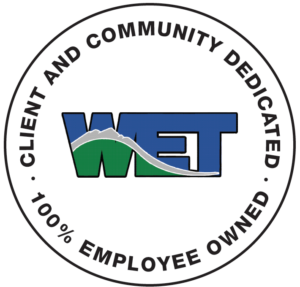FLOODPLAIN SURFACE MODELING
WET has provided hydrologic and hydraulic engineering for multiple developments near streams and rivers
Our floodplain permitting projects have included modifications to or development near Zone A and Zone AE watercourses for approval from Local Floodplain Administrators, the Federal Emergency Management Agency (FEMA), and the Department of Natural Resources and Conservation (DNRC). WET has successfully permitted Conditional Letter of Map Revisions (C-LOMR), Letter of Map Revisions (LOMR), and Letter of Map Revision-Fill (LOMR-F).
WET Engineers have a strong hydrology background for use in all flood management projects including: utility stream crossings, Flood Insurance Rate Map (FIRM) watercourse restoration, culvert/bridge modification, and stormwater management. WET first determines if information is available including Montana Department of Transportation (MDT) bridge analysis, Letter of Map Change (LOMC) information, or United States Geological Survey (USGS) gage information. When minimal information is available, WET uses the following resources provided by the US Department of the Interior and US Geological Survey:
- Guidelines for Determining Flood flow Frequency, Bulletin #17B, Editorial Corrections March 1982
- Parrett, Charles and Johnson, Methods for Estimating Flood Frequency in Montana Based on Data through Water Year 1998, WRIR 03-4308
- User’s Manual for Program PeakFQ, Annual Flood Frequency Analysis Using Bulleting 17B Guidelines, Techniques and Methods 4-B4
WET performs all survey work to characterize the stream cross sections and utilizes AutoCAD Civil 3D and the US Army Corps HEC-RAS program to model the hydraulic impacts of each unique project. Mapping is completed in either AutoCAD or GIS. WET has completed hydraulic analysis for projects throughout Montana and Idaho. WET employees take pride in providing project deliverables that are of sound engineering and clear technical documentation. WET includes the following in their reports to DNRC, Floodplain Administrators and FEMA: survey and topography data utilized, boundary conditions, cross section development, hydraulic structure(s), roughness coefficient assignments, non-conveyance areas, floodway determination, model calibration as available, cHECk-RAS message explanations, and effective mapping and tie-ins. Reports and electronic submittals also included digital flood profiles, Base Flood Elevation (BFE) and floodway data tables, work maps, GIS deliverables, and model files. Quality assurance and quality control (QA/QC) documentation is addressed in the report and the model is labeled to show internal Professional Engineer (PE) peer review, HEC-RAS version, and purpose of study. WET has a great rapport with floodplain administrators, DNRC, and FEMA, and enjoys each new watercourse challenge.




STILLWATER MINE STREAM RESTORATION—STILLWATER RIVER, MONTANA
SILVER GATE LETTER OF MAP CHANGE—SILVER GATE, MONTANA
YELLOWSTONE RIVER HOME RETROFITTING—YELLOWSTONE RIVER